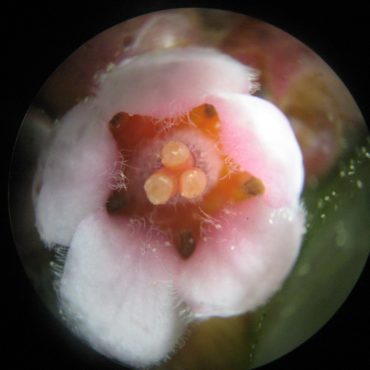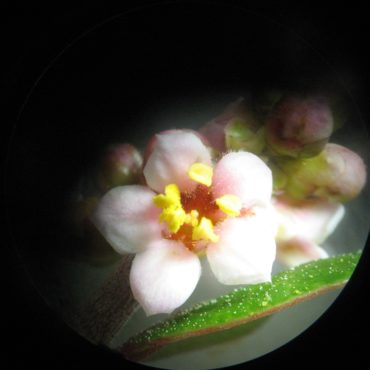The Kumeyaay brew the seeds into a tea. Modern hikers drop a fruit or two into their water bottles for a slight tang.
Lemonade Berry
Rhus integrifolia
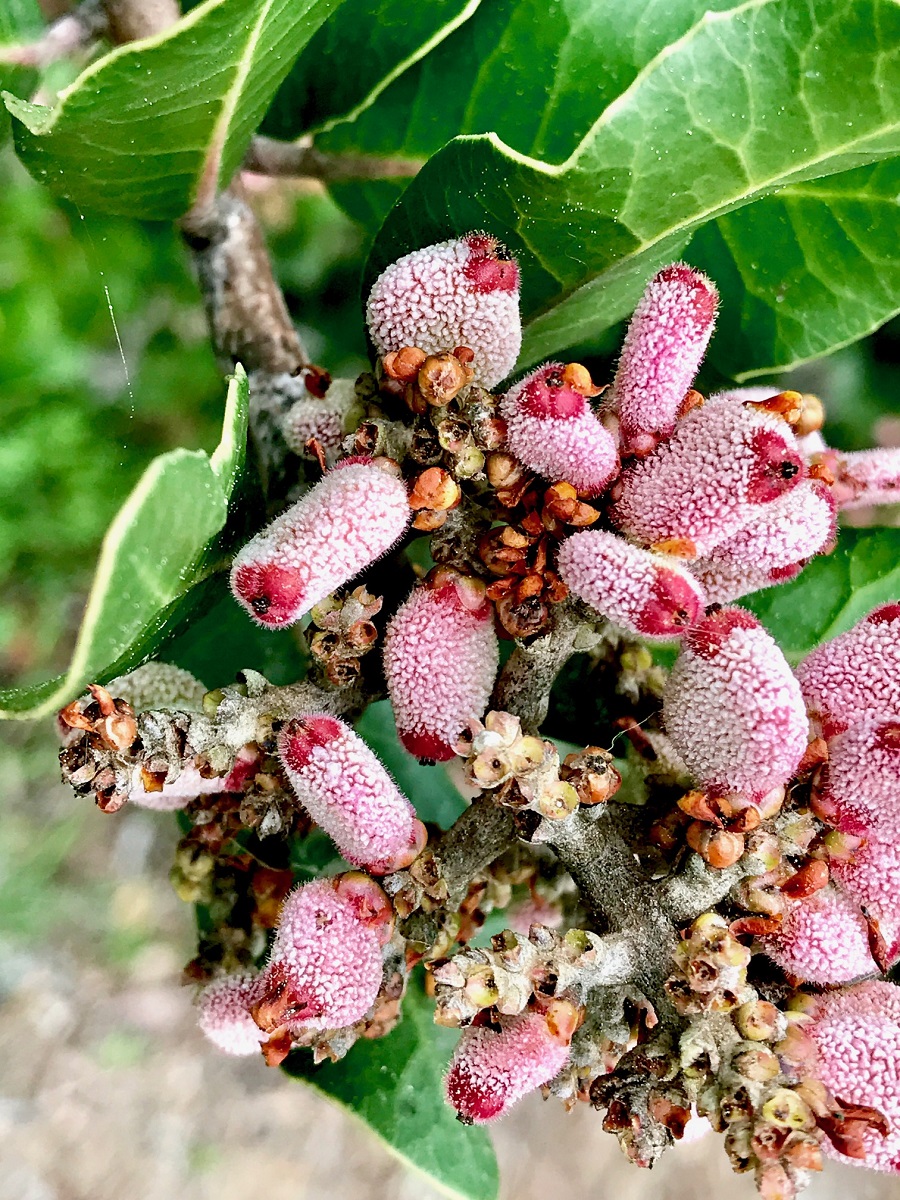
Other Common Names:
Lemonadeberry, Lemonade sumac
Description 2,4,27,59
Lemonade berry is a rounded, aromatic, evergreen shrub usually less than 10 feet (3 m) tall. The trunk is short and stout, and twigs and smaller branches are noticeably thickened. The aroma of new growth has been likened to wintergreen, although this author smells newly mowed grass. Some people are sensitive to contact with the sap of lemonade berry, breaking out in an itchy rash that is similar to the rash of poison oak.24,36
Leaves are thick and leathery, broadly oval, 1-2½ inches (2.5-6 cm) long; they are flat or cupped to the underside with smooth or coarsely serrate margins. Mature leaves are dark green, younger leaves brighter; the newest leaves and young stems may have a reddish tinge.
Flowers are small, radially symmetrical, about ¼ inch (0.6 cm) across and white to pink in color. The tiny flowers occur in dense clusters at the ends of branches. There are five pinkish sepals, five white or pink petals and five stamens. The pistil has one rounded ovary with three short, stout styles. Most plants have either either bisexual flowers or female flowers with non-functional stamens.4,536,537 The major bloom period is February to May.1
The reddish fruit are flattened, ¼-½ inch (6-13 mm) wide. There is one, hard-coated seed. Young fruit are coated with a gray, viscous material that disappears as the season progresses. This coating is very sour with a flavor similar to lemon.
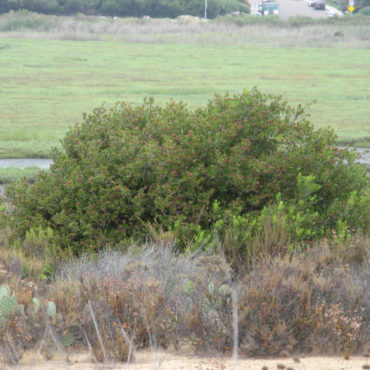
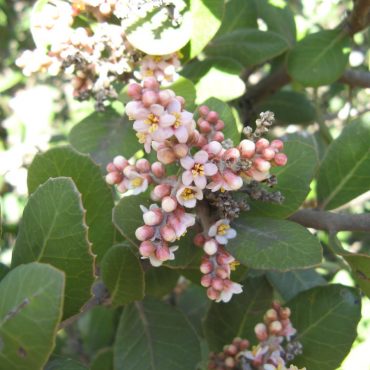
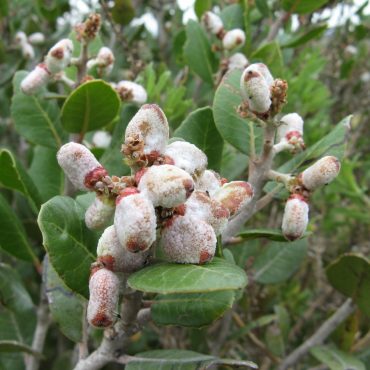
Distribution 7,89
Lemonade berry is native to California, primarily occurring below 2000 feet (700 m) south of Pt. Conception and west of the Peninsular Range. It is an important component of both chaparral and coastal sage scrub.

Classification 2,11,34,44
Lemonade berry is a dicot angiosperm in the sumac family, the Anacardiaceae. Members of this family have small, five-petaled flowers each of which produces one seed with a hard seed coat that is surrounded by fleshy tissue or some form of a gelatinous coating. Many have resinous or milky sap.
Many sumacs, such as poison oak and poison ivy, contain urushiol which produces severe contact dermatitis. Other members of the family, such as cashews and mangos are familiar food crops.
Lemonade berry is the only member of the Rhus genus to occur in the Reserve, but other family members are present, including the closely related laurel sumac (Melosma laurina) and poison oak (Toxicodendron diversiloba).
Jepson eFlora Taxon Page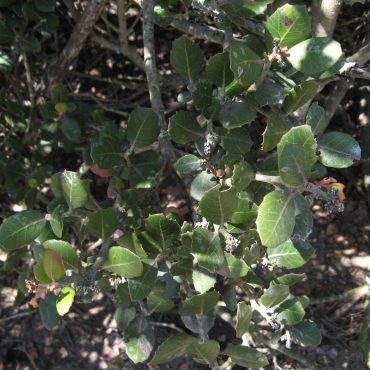
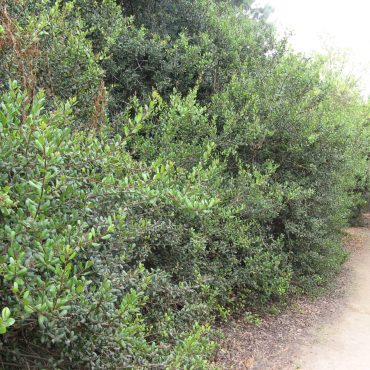
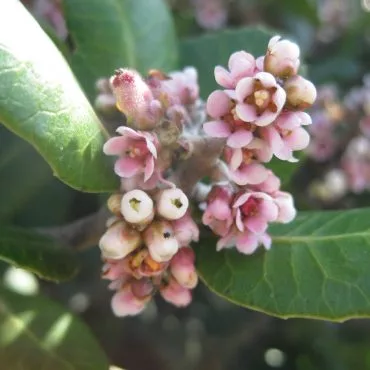
Ecology
Like other shrubs of the chaparral, lemonade berry is drought-adapted by having leaves that are relatively small, thick and leathery to retard water loss; they are often cupped around the lower surface. Rigid internal leaf structure prevents the leaf from wilting,32 and they are ready to take up water after any shower.
Lemonade berry fruits are eaten by a variety of birds and mammals. In one study, the most important bird consumers were Bush Tits, but they ate only the fleshy outer layer and not the hard seed.536Transport of seeds away from the parent plant was due primarily to small mammals.
The short, stiff branchlets make excellent support for funnel-web weaving spiders, and their flattened webs often festoon lemonade berry shrubs.
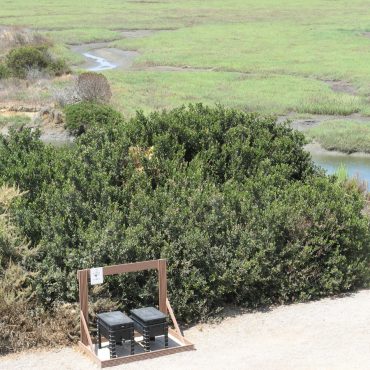
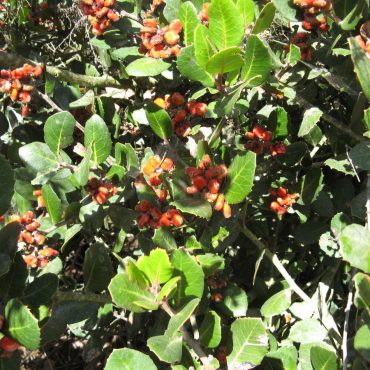
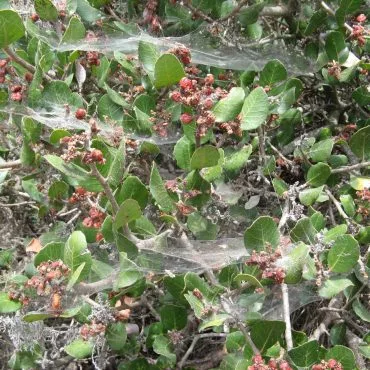
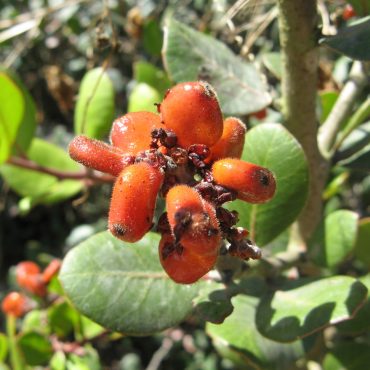
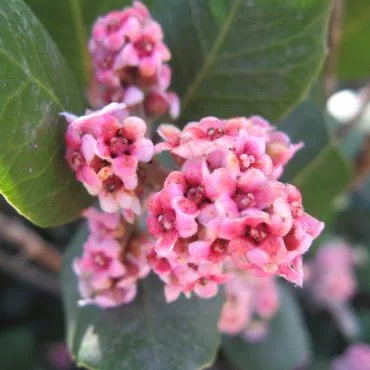
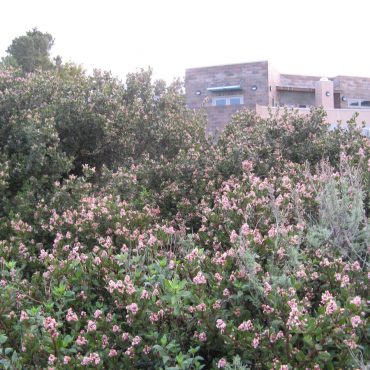
Interesting Facts
Most plants have bisexual flowers. However there are several plant species that have male and female flowers on separate plants (“dioecious“). In the Reserve, these include willows, cottonwoods, coyote brush and poison oak to name a few. Other plants have distinct male and female flowers on the same plant (“monoecious” ): wild cucumber, and sycamores. However some plants have other combinations. For instance, laurel sumac has separate plants with only male or female flowers but some female plants may have male flowers scattered among the female flowers.4
Lemonade berry, which is related to both poison oak and laurel sumac, has plants with bisexual flowers and others with only female flowers – in which stamens are present but non-functional.4,536 There are also reports of female flowers and bisexual flowers on different branches of the same plant.536,537 In a one year study of lemonade berry populations living in Del Mar Heights and Torrey Pines State Park, nearly half the plants were female only. Curiously, these plants accounted for “almost all” of the seed production.536
It is an ecological truism that genetic diversity in a population is good. Genetic diversity is assured by cross pollination, and we recognize many strategies among plants to promote it. For instance, in a bisexual flower, the stamens often mature before or after the pistil is receptive. The production of male and female flowers on separate plants is the extreme adaptation, eliminating self-pollination entirely, and many ecologist believe that the production of bisexual and female flowers, such as seen in lemonade berry, is a stage in the slow evolution toward complete separation of male and female flowers.537
On the other hand, it was recognized as early as Darwin,538 that there are situations in which cross-pollination is not beneficial – for instance in a rapidly expanding population where outliers may be isolated from potential pollinators, or in populations where suitable pollinators may be unpredictable in space or time. Perhaps the variety of flowers found in lemonade berry is not a stage of evolution, but a balance of strategies to insure persistence in an unpredictable environment. It would seem that the more ecologists study this situation, the more complicated it gets

